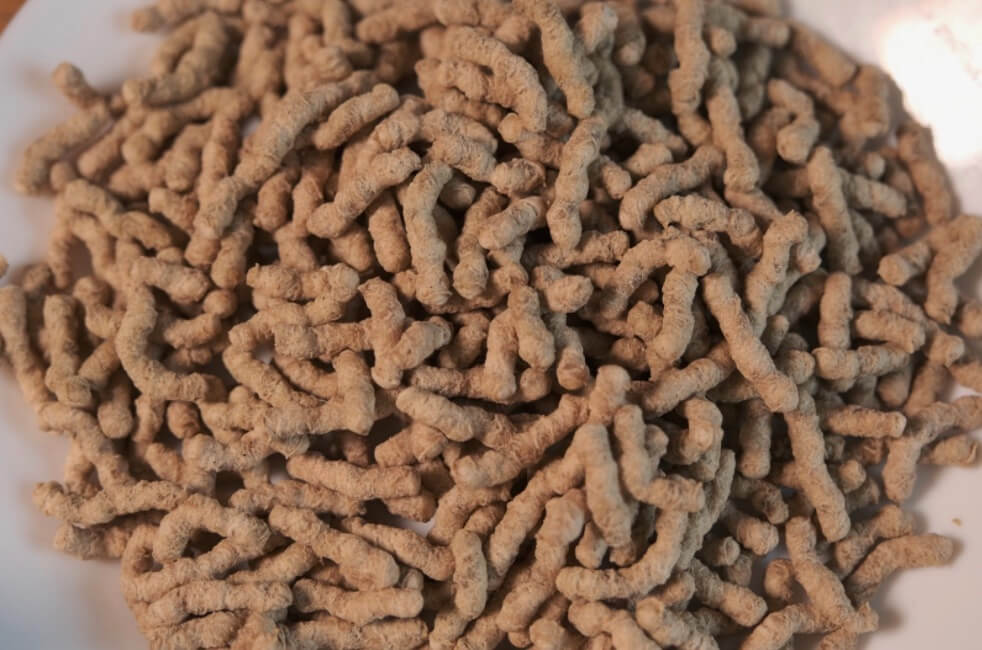Increasing amount of waste is generated from the food processing industry. However, most plant food‐derived byproducts are rich in nutrients, and therefore can be utilized to manufacture value‐added foods.
Extrusion is a combined act of mixing, shearing, kneading, cooking, compressing, and forcing a molten material, under high pressure, through a narrow opening. Since its introduction in the 20th century, it has been widely utilized in the manufacture of cereal based products, snacks, frankfurters, pasta products, and meat analogues.

2-screw extruder in a research facility.
An extruder consists of one or two screw(s) rotating in a tightly fitting cylindrical barrel, which is equipped with a feeder at its inlet end and a die at its discharge end.
Single-screw extruder (SSE) is relatively cheaper and simpler to operate compared to TSE. However, only a narrow range of materials with specific moisture and fat content are appropriate for SSE processing. A TSE provides greater flexibility over the range of products manufactured and the control over process parameters, such as pressure and temperature. Unlike SSE, TSE can process wet, viscous, and powdery ingredients.
Extrusion process allows the opportunity to integrate plant byproducts in an attempt to diversify the nutrients content of the extrudates and is currently one of the most important food processing technologies that has the potential to be utilized for this purpose.
Recent research has successfully added plant byproducts in extruded snacks and energy bars, with the main aims of improving nutritional value and sensory properties.

Textured protein granules that can be used for making meat analogues.
The conditions of extrusion carry a profound effect on the intrinsic properties of plant protein, which leads to breakage of existing bonds, cross‐linkage with other nutrients, and formation of new compounds. Depending on the process parameters, extrusion can both improve and impair protein digestibility.
The majority of studies have demonstrated enhanced protein digestibility after extrusion. (Under some circumstances, particularly at severely high temperature, extrusion denatures protein which, however, may reduce the digestibility protein.)
Texture is a reflection of the structural integrity of extruded products and acts as one of the most critical factors affecting consumer acceptability of extruded foods. Its parameters cover hardness, crispiness, adhesiveness, gumminess, and springiness.
That’s where it makes the difference – when you don’t make a difference! Between animal-based meat and an analogue with the same nutritional properties, taste and texture.
